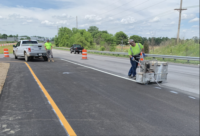Are all U.S. megaprojects justified? Dan McNichol, the author of "The Roads That Built America," says, "In a democracy, these megaprojects are so vetted that, if they survive the process, they're almost all worthy." Indeed, megaprojects such as the Big Dig and Seattle's Alaskan Way Viaduct are meant to correct questionable projects of the past that built elevated highways that cut off city waterfronts.
Schwartz concedes that there can be "bad" projects, such as the politically motivated "Bridge to Nowhere," proposed in Alaska in the 1990s, and some of the highways that Robert Moses wanted to build in New York City. He adds, "There isn't a project that couldn't be executed better, but we're all smarter after the fact."
More life-cycle analysis, rather than an emphasis on low bids, can result in better execution of megaprojects, which can lead to increased public trust, many suggest. Andy Herrmann, past president of the American Society of Civil Engineers, notes that ASCE has done research that shows various public agencies have begun using life-cycle analysis to prioritize which projects and which project versions to invest in. "It might help if that gets out there—showing the public that rational research is done to maximize the cost-to-benefit ratio now and in the future," he says.
Public-private partnerships also emphasize asset life-cycle management and remove the incentives to underestimate cost and schedule at the outset, says Levitt. "Those bidding on the project have to absorb the risks, so you tend to introduce a lot of discipline."
Brustlin concurs, noting that public trust can be gained by "benchmarking what we spend and what we get out of it—demonstrating efficiency. With a P3, that's where it's all thought out. It's a broader view than when you have a fixed price."
Another big-picture benefit is that, as messy and complex as they can be, recent megaprojects have pushed the engineering innovation envelope, provided vital economic and security-related links, and created symbolic icons of America.
Henry Petroski, author and civil engineering professor at Duke University, questions if the desire for an iconic structure that is distinct from the Golden Gate Bridge made for an unnecessarily expensive new Bay Bridge. "You can make the case that it was also justified due to innovation, but how much?" he says.
Rich Cavallaro, CEO of Skanska USA, which worked on Ground Zero rebuilding projects, takes another view. "People have short memories," he says. "[Post-9/11], everyone wanted iconic structures to show the world. Then, there was flak over the [Fulton Street Transit Center] oculus. We could have built a concrete box; it would have been the cheapest solution. But is that what we wanted to do? One can debate how far is too far and how much is too much, but we should build something we're proud of."





